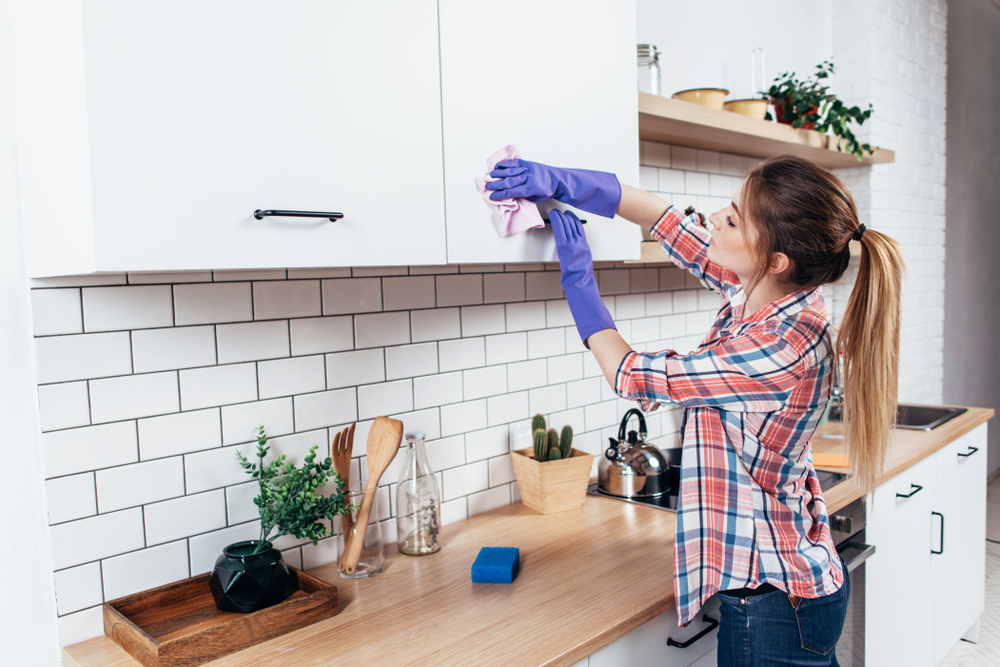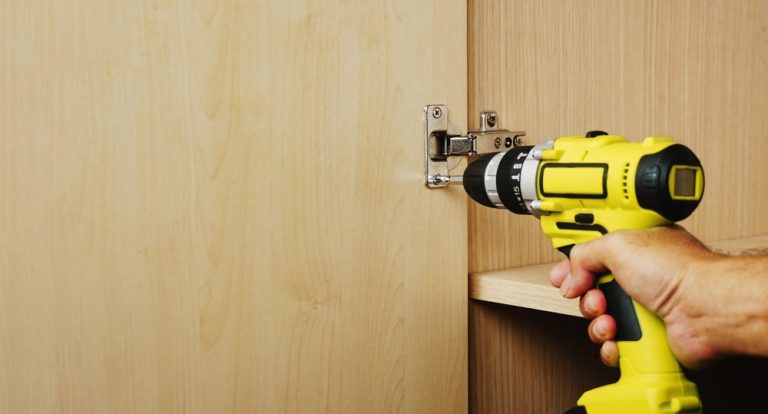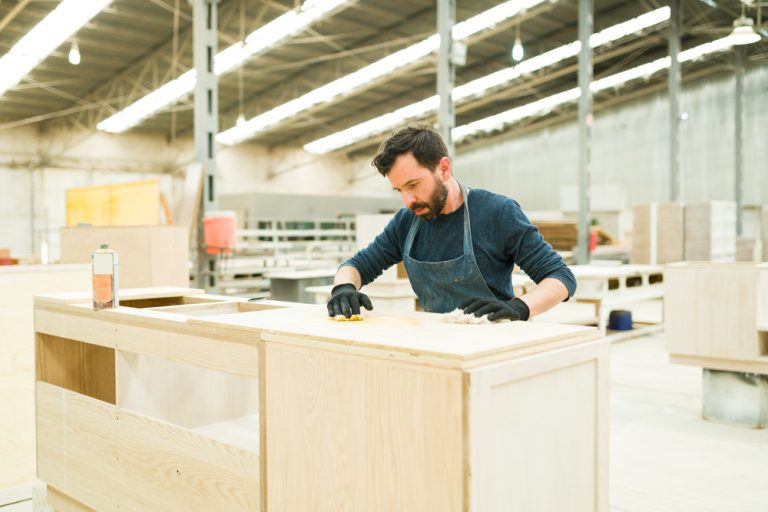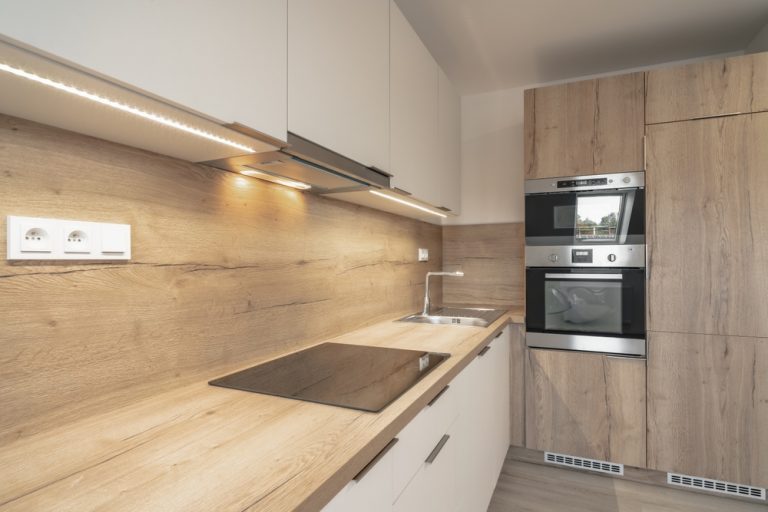Why Are My Kitchen Cabinets Sticky After Cleaning?

You’ve just spent time cleaning your kitchen cabinets, expecting them to feel smooth and fresh, but instead, they’re left with a sticky residue. This frustrating experience leaves many homeowners asking, “Why are my kitchen cabinets sticky after cleaning?” There are several reasons why your cabinets might feel sticky, even after a thorough cleaning, ranging from the type of cleaning products used to the buildup of grease and grime.
In this blog, we’ll explore the common causes of sticky kitchen cabinets and offer solutions to help you achieve that clean, residue-free finish.
Common Causes of Sticky Kitchen Cabinets
Understanding the root cause of the stickiness on your kitchen cabinets is the first step in finding an effective solution. Several factors can contribute to this issue, and identifying them will help you choose the right cleaning method.
Residue from Cleaning Products
- Incorrect Product Use: One of the most common reasons for sticky cabinets after cleaning is the residue left behind by the cleaning products themselves. Some cleaning solutions, particularly those that are oil-based or contain wax, can leave a film on the surface of your cabinets. If not rinsed properly, this film can create a sticky feeling.
- Overuse of Product: Using too much cleaning product can also contribute to the problem. Excessive amounts of cleaner may not fully rinse off, leaving behind a sticky residue that’s hard to remove.
Grease and Grime Buildup
- Cooking Residue: Kitchens are prone to grease and grime buildup, especially in areas near the stove. Over time, this grease can mix with dust and other particles, creating a sticky layer on your cabinets. If this buildup is not effectively removed during cleaning, it can leave your cabinets feeling sticky.
- Old Grease: In some cases, older grease that has been absorbed into the cabinet’s finish can resurface after cleaning, causing a sticky texture. This is particularly common in kitchens that have not been regularly cleaned.
Humidity and Moisture
- High Humidity: If your kitchen is exposed to high humidity, it can contribute to sticky cabinets. Moisture in the air can mix with residual cleaning products or grease, causing a tacky feeling on the cabinet surfaces.
- Improper Drying: After cleaning, it’s important to ensure that your cabinets are thoroughly dried. Leaving moisture on the surface can interact with existing residues, leading to stickiness.
Degraded Finish
- Worn or Damaged Finish: Over time, the finish on your kitchen cabinets can wear down or become damaged, especially if exposed to harsh cleaning chemicals or excessive moisture. When the finish degrades, it can lose its protective qualities, allowing dirt and grease to penetrate the wood. This can create a sticky surface even after cleaning.
Also Read – What Color White for Kitchen Cabinets?
Solutions for Removing Sticky Residue from Kitchen Cabinets
Now that you know some of the common causes of sticky kitchen cabinets, it’s time to explore solutions that can help you get rid of that unwanted residue. Here are some effective methods for cleaning and maintaining your cabinets.
Use a Vinegar and Water Solution
- Why It Works: Vinegar is a natural degreaser that can break down and remove sticky residues without leaving a film. It’s also safe for most cabinet finishes.
- How to Use: Mix equal parts white vinegar and warm water in a spray bottle. Lightly spray the solution onto the sticky areas of your cabinets and let it sit for a few minutes. Then, use a soft cloth or sponge to wipe away the residue. Rinse with clean water and dry the surface thoroughly.
Apply Baking Soda Paste
- Why It Works: Baking soda is a gentle abrasive that can help scrub away sticky buildup without damaging the cabinet’s finish. It’s particularly effective for removing old grease and grime.
- How to Use: Mix baking soda with a small amount of water to create a thick paste. Apply the paste to the sticky areas using a soft cloth or sponge. Gently scrub in circular motions, then wipe away the paste with a damp cloth. Rinse the area with clean water and dry thoroughly.
Try Dish Soap and Warm Water
- Why It Works: Dish soap is designed to cut through grease and can be effective in removing sticky residues from your cabinets.
- How to Use: Add a few drops of dish soap to a bowl of warm water. Dip a soft cloth or sponge into the soapy water and wring it out until it’s damp, not soaking wet. Wipe down the sticky areas of your cabinets, focusing on any greasy spots. Rinse with clean water and dry the surface with a clean towel.
Use a Commercial Degreaser
- Why It Works: If your cabinets have heavy grease buildup that’s difficult to remove with household solutions, a commercial degreaser may be necessary. These products are formulated to break down tough grease and grime.
- How to Use: Follow the manufacturer’s instructions for applying the degreaser to your cabinets. Be sure to test it on a small, inconspicuous area first to ensure it doesn’t damage the finish. After applying the degreaser, rinse the cabinets thoroughly with clean water and dry them completely.
Addressing Humidity Issues
- Why It Works: Reducing humidity in your kitchen can prevent moisture from contributing to sticky cabinet surfaces.
- How to Use: Use a dehumidifier or ensure proper ventilation in your kitchen to reduce humidity levels. Consider using an exhaust fan when cooking to remove excess moisture from the air. Additionally, make sure your cabinets are fully dried after cleaning to prevent any moisture-related stickiness.
Preventing Future Stickiness on Kitchen Cabinets
After successfully removing the sticky residue from your kitchen cabinets, it’s important to take steps to prevent the issue from recurring. Regular maintenance and careful cleaning can help keep your cabinets feeling clean and smooth.
Regular Cleaning Routine
- Why It’s Important: Regularly cleaning your cabinets prevents grease and grime from building up, reducing the chances of sticky surfaces. Aim to wipe down your cabinets at least once a week to keep them in good condition.
- How to Do It: Use a mild cleaner or a mixture of vinegar and water for regular cleaning. Avoid harsh chemicals that can degrade the finish over time.
Avoiding Harsh Cleaners
- Why It’s Important: Harsh cleaners, especially those containing ammonia or bleach, can damage the finish on your cabinets, leading to stickiness. Stick to gentle, non-abrasive cleaners that are safe for wood or painted surfaces.
- How to Do It: Read product labels carefully and choose cleaners specifically designed for kitchen cabinets. When in doubt, test a small area before applying the cleaner to the entire surface.
Proper Rinsing and Drying
- Why It’s Important: Ensuring that your cabinets are properly rinsed and dried after cleaning is crucial for preventing sticky residue. Any leftover cleaning product or moisture can contribute to stickiness.
- How to Do It: After cleaning, wipe down your cabinets with a damp cloth to remove any remaining cleaner. Then, dry the surface thoroughly with a clean towel to prevent moisture from lingering.
Maintaining the Cabinet Finish
- Why It’s Important: A well-maintained cabinet finish provides a protective barrier against grease, moisture, and dirt. Regularly checking and maintaining the finish will help prevent stickiness and prolong the life of your cabinets.
- How to Do It: If you notice the finish on your cabinets starting to wear down, consider applying a fresh coat of protective sealant or varnish. This will help keep the surface smooth and resistant to grease and grime.
Conclusion
So, why are your kitchen cabinets sticky after cleaning? The answer often lies in the cleaning products used, the presence of grease and grime buildup, humidity levels, or a degraded finish. By understanding these common causes and applying the appropriate solutions—such as using vinegar and water, baking soda paste, or a commercial degreaser—you can effectively remove sticky residue and keep your cabinets clean and smooth.
To prevent future stickiness, establish a regular cleaning routine, avoid harsh cleaners, and ensure proper rinsing and drying. With the right care and maintenance, your kitchen cabinets will remain a beautiful and functional part of your kitchen for years to come.






